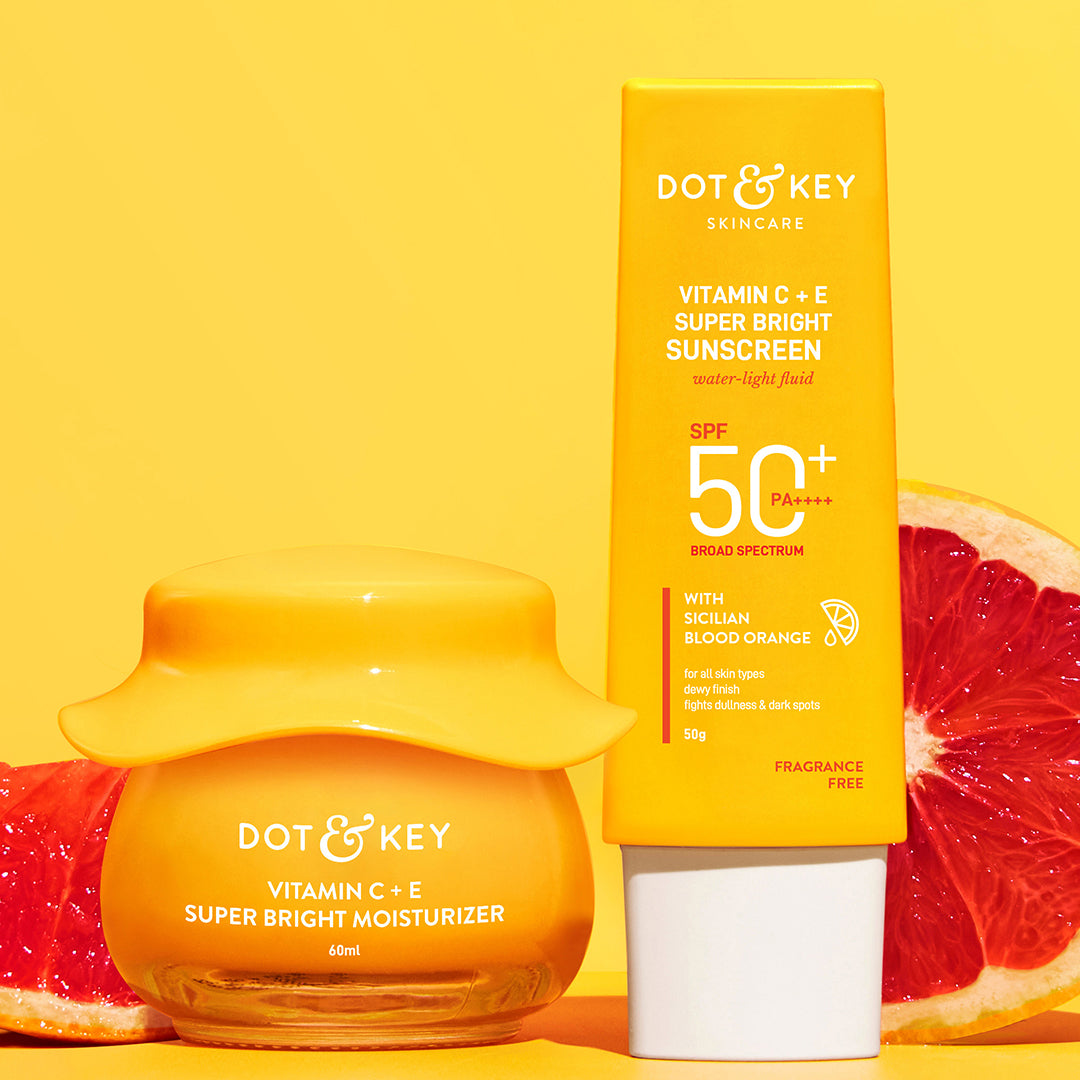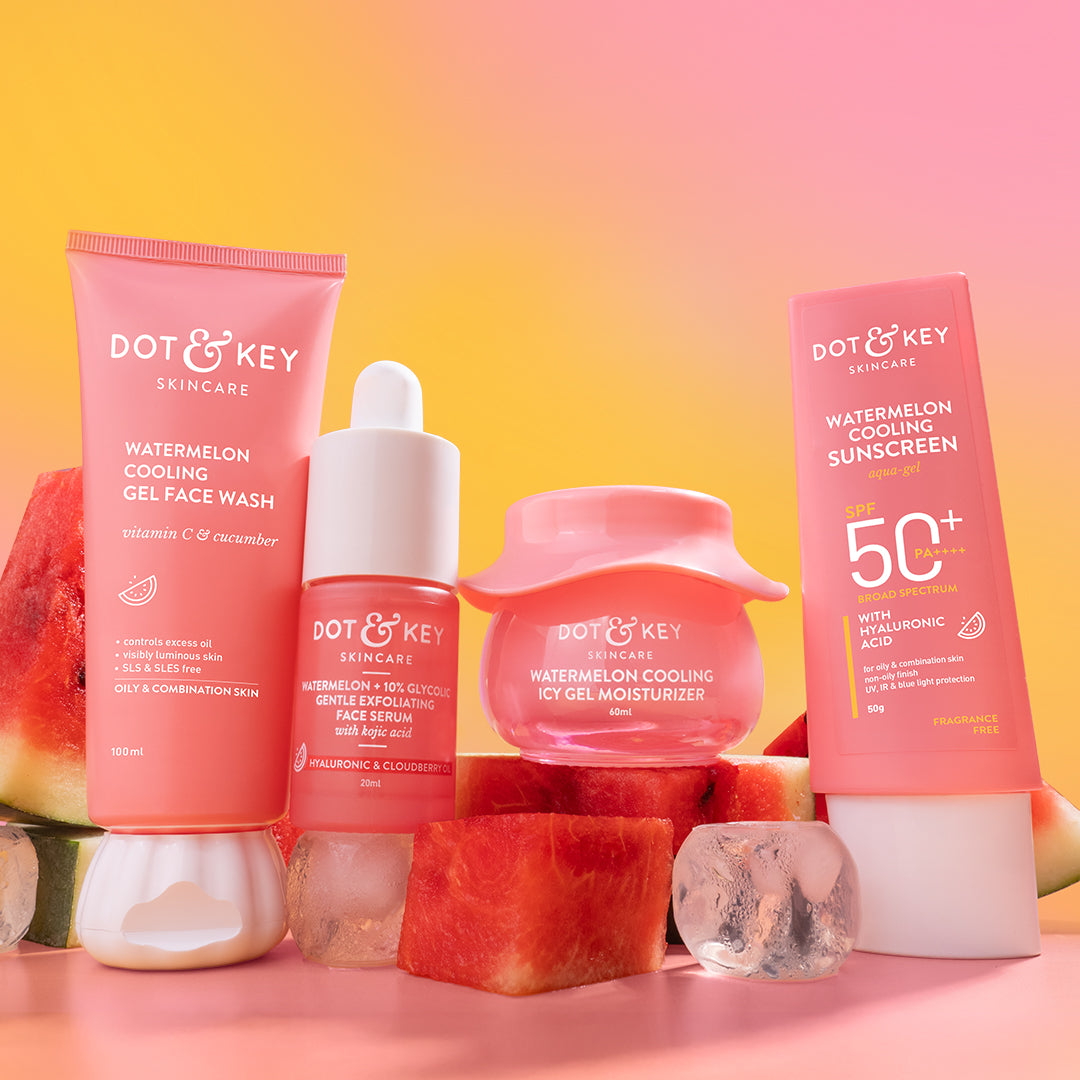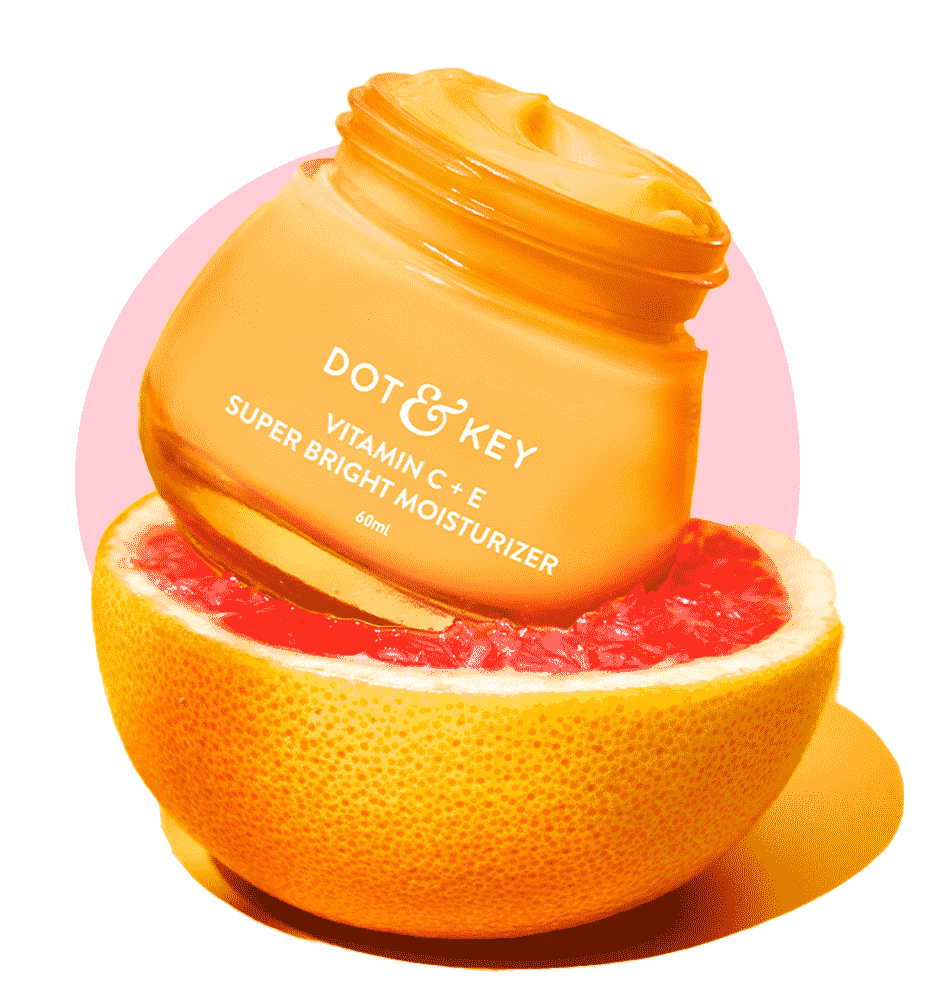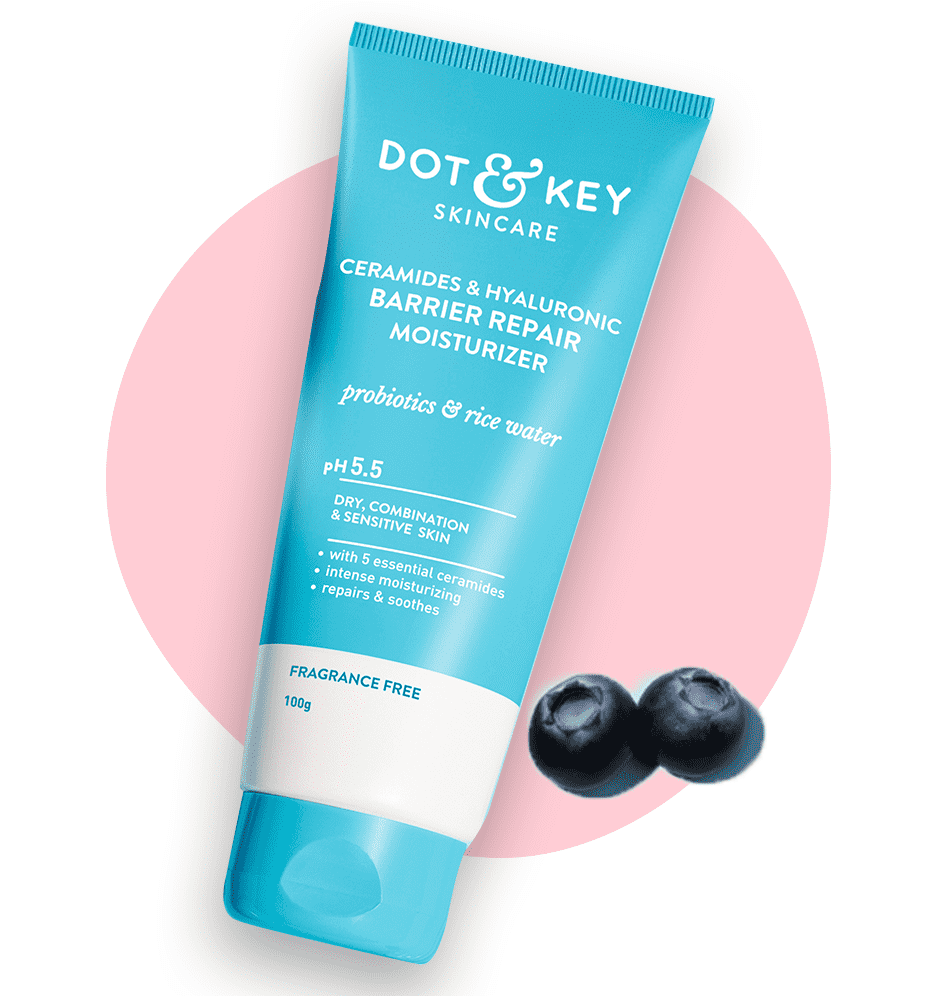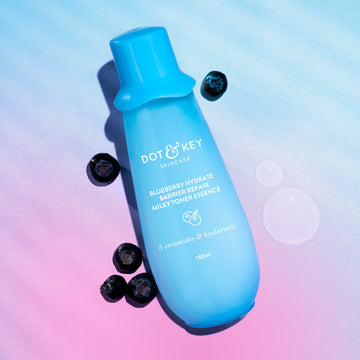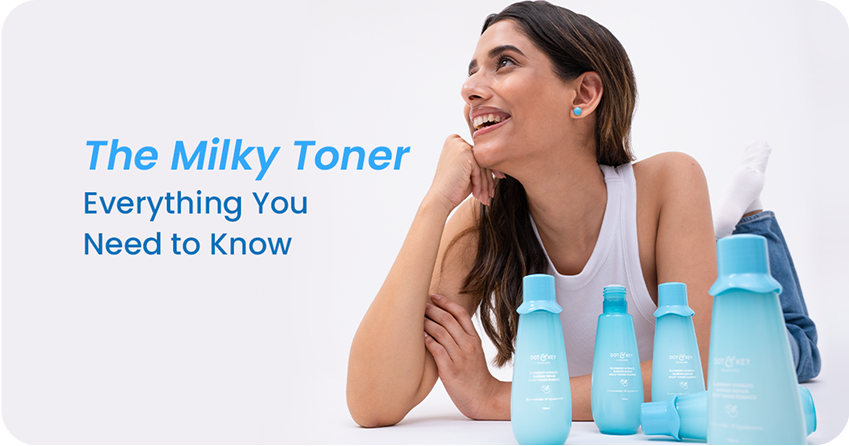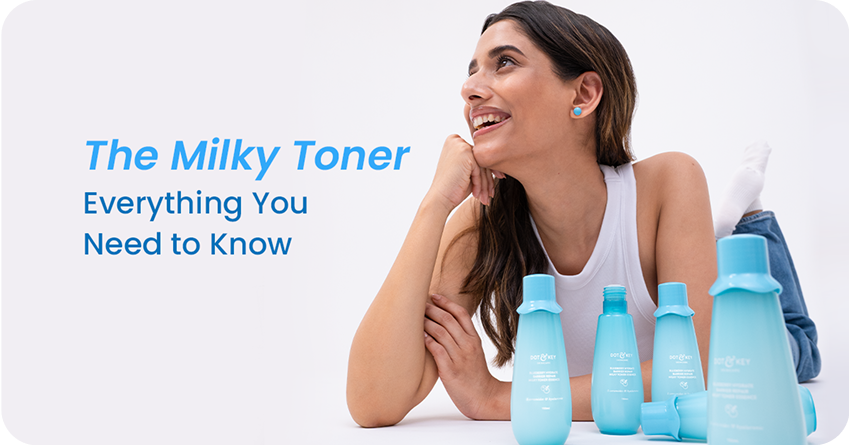
Milky toners have quickly become a skincare staple, known for their creamy, lotion-like texture and ability to hydrate, soothe, and prep the skin—without the harshness often associated with traditional toners. Unlike classic astringent formulas, milky toners are packed with nourishing ingredients like ceramides, hyaluronic acid, and botanical extracts that support the skin barrier and boost moisture retention.
But what exactly is a milky toner, and why is it trending in skincare routines worldwide?
In this article, we’ll break down what makes milky toners unique, explore their science-backed benefits, explain how to use them effectively, and highlight who can benefit most from adding one to their regimen. With expert insights and product recommendations, you’ll learn why this gentle yet powerful step could be the hydration boost your skin has been craving.
Whether you’re dealing with dryness, sensitivity, or simply want to level up your routine, this guide will give you everything you need to know about milky toners.
What Is a Milky Toner?
A milky toner, also known as a milk toner, is a skincare product with a creamy, opaque, milk-like consistency that merges the functions of a traditional toner and a lightweight moisturizer. Designed to be used after cleansing, it helps:
- Remove residual impurities
- Restore the skin’s natural pH balance (typically around 5.5)
- Prep the skin for better absorption of serums, moisturizers, or sunscreen
Unlike traditional toners, which can be drying or astringent, milky toners focus on hydration, barrier support, and calming sensitive skin. Despite the “milk” in the name, most formulations are dairy-free, achieving their signature texture through a blend of water, humectants, emollients, and soothing active ingredients like panthenol, ceramides, or centella asiatica.
Key Characteristics
-
Texture:
- Slightly thicker than watery toners
- Has a smooth, lotion-like feel
- Absorbs quickly without stickiness
- Dot & Key’s Hydrating Milky Toner has a lightweight milky fluid texture that’s layerable, non-sticky & quick-absorbing
- Ultra gentle formula suitable for all skin types
-
Ingredients:
- Humectants: Hyaluronic acid, glycerin, or aloe vera to draw moisture into the skin
- Emollients: Squalane, jojoba oil, or ceramides to soften and support the skin barrier
- Soothing Actives: Niacinamide, centella asiatica, or chamomile to calm irritation
- Gentle Exfoliants (in some): Lactic acid or gluconolactone for mild exfoliation
-
Purpose:
- Hydrates, soothes, balances, and preps skin while removing lingering debris or cleanser residue.
Milk toners are rooted in K-beauty and clean beauty trends, emphasizing gentle, multi-tasking products that enhance skin health without harshness. Their popularity is evident, with consumer platforms noting a projected 58.9% increase in “milky toner” searches for 2025.
Dr. Sarah Kim, a dermatologist, explains: “Milk toners are a hybrid of toning and moisturizing, delivering hydration and comfort while prepping the skin for actives. They’re a versatile addition to modern skincare routines.”
How Milk Toners Work
Cleansing and Balancing
- Removes residual makeup, oil, or cleanser left after washing, ensuring a clean canvas.
- Restores the skin’s pH after cleansing, which can disrupt the acid mantle. A 2019 study in The Journal of Investigative Dermatology found that balanced pH reduced irritation by 20%.
Hydrating
- Humectants like hyaluronic acid draw water into the skin, boosting moisture levels. A 2020 study in Journal of Cosmetic Science showed hyaluronic acid increased hydration by 30% within hours.
Soothing
- Ingredients like niacinamide or centella asiatica calm redness and inflammation, ideal for sensitive or stressed skin. A 2018 study in Dermatologic Therapy found niacinamide reduced redness by 25% after 4 weeks.
Barrier Support
- Emollients and ceramides strengthen the skin barrier, reducing transepidermal water loss (TEWL). A 2020 study in Dermatology and Therapy showed ceramide-based products decreased TEWL by 20%.
Prepping for Actives
- Enhances penetration of serums or moisturizers by hydrating and balancing the skin. A 2021 study in Journal of Cosmetic Dermatology found that pre-toning improved active absorption by 15%.
Dr. Michael Lee, a dermatologist, notes: “Milk toners act like a primer for your skin, ensuring it’s hydrated, balanced, and ready to absorb subsequent products effectively.”
Benefits of Milk Toners
Milk toners offer a range of benefits that make them a versatile addition to any skincare routine. Here are six key advantages, backed by research:
1. Deep Hydration Without Heaviness
- How It Helps: Humectants like glycerin and hyaluronic acid lock in moisture, while emollients provide a soft, non-greasy finish, ideal for all skin types.
- Research: A 2019 study in Clinical, Cosmetic and Investigational Dermatology found that hydrating toners increased skin moisture by 25% within 2 weeks, improving texture.
- Why It Matters: Hydrated skin looks plump, smooth, and radiant, reducing the appearance of fine lines, flakiness, or oil overproduction.
2. Soothes Sensitive or Irritated Skin
- How It Helps: Actives like centella asiatica or niacinamide calm redness and inflammation, making milk toners perfect for sensitive, acne-prone, or post-treatment skin.
- Research: A 2020 study in The British Journal of Dermatology showed niacinamide reduced sensitivity by 20% after 4 weeks.
- Why It Matters: Reduces discomfort from environmental stressors, harsh cleansers, or actives like retinoids.
3. Strengthens the Skin Barrier
- How It Helps: Ceramides, squalane, or fatty acids repair the lipid matrix, preventing moisture loss and protecting against irritants.
- Research: A 2021 study in Dermatologic Surgery found ceramide-containing products improved barrier function by 30% after 6 weeks.
- Why It Matters: A strong barrier reduces dryness, sensitivity, and acne flare-ups, enhancing overall skin health.
4. Enhances Product Absorption
- How It Helps: By hydrating and balancing the skin’s pH, milk toners create an optimal environment for serums and moisturizers to penetrate deeply.
- Research: A 2020 study in Journal of Cosmetic Dermatology showed that toning before serums increased active penetration by 15%.
- Why It Matters: Maximizes the performance of expensive actives like vitamin C or retinol.
5. Gentle Exfoliation for Smoother Texture
- How It Helps: Some milk toners contain mild exfoliants like lactic acid or gluconolactone, which remove dead skin cells without irritation, improving texture and radiance.
- Research: A 2019 study in Journal of Cosmetic Science found low-strength lactic acid improved skin smoothness by 10% after 4 weeks.
- Why It Matters: Promotes a brighter complexion and prevents clogged pores, especially for sensitive or acne-prone skin.
6. Balances Skin for a Healthy Glow
- How It Helps: Restores pH and hydrates to prevent oil overproduction or dryness, promoting a radiant, even-toned complexion.
- Research: A 2019 study in The Journal of Investigative Dermatology found pH-balanced toners reduced irritation by 20% and supported barrier health.
- Why It Matters: Balanced skin is less prone to acne, sensitivity, or dullness.
Dr. Jane Smith, a dermatologist, says: “Milk toners are a multi-tasking marvel—hydrating, soothing, and prepping skin in one gentle step. They’re a cornerstone for healthy, glowing skin.”
Who Should Use Milk Toners?
Milk toners are versatile, suiting most skin types due to their gentle, hydrating nature. Here’s a breakdown of who benefits most:
Oily/Acne-Prone Skin
- Non-comedogenic formulas with niacinamide or mild exfoliants hydrate without clogging pores, controlling oil and reducing acne.
- A 2020 study in Journal of Cosmetic Dermatology found niacinamide toners reduced sebum by 15% after 6 weeks.
Dry/Sensitive Skin
- Formulas with ceramides, hyaluronic acid, or centella asiatica hydrate, soothe, and repair the barrier, alleviating tightness or redness.
- A 2021 study in Dermatologic Therapy showed hydrating toners improved dry skin by 25%.
Combination Skin
- Balances oily T-zones and dry areas, providing hydration without greasiness.
- Suitable for fluctuating skin needs in transitional seasons.
Normal/Mature Skin
- Hydrates and preps for anti-ageing serums, supporting elasticity and radiance.
- A 2019 study in Dermatologic Surgery noted toners enhanced anti-ageing active efficacy by 10%.
Seasonal Use
- Summer/Humid: Lightweight hydration for oily or combo skin.
- Winter/Dry: Barrier support for dry or sensitive skin.
- Spring/Fall: Balances variable weather effects.
Dr. Emily Chen notes: “Milk toners are a rare gem, effective for nearly all skin types and adaptable to any season or concern.”
How to Use Milk Toners Effectively
To maximize the benefits of milk toners, follow these research-backed application tips:
Cleanse First
- Use a gentle, pH-balanced cleanser (pH 5–6) to remove makeup, oil, or sunscreen. Double-cleanse at night if needed.
- A 2019 study in Journal of Cosmetic Science showed clean skin improved toner absorption by 15%.
- Oily/Combo: Gel cleanser.
- Dry/Sensitive/Mature: Creamy cleanser.
- Normal: Either, based on preference.
Apply to Damp Skin
- Pat 2–3 drops or a small amount onto slightly damp skin (after cleansing or misting) with clean hands or a cotton pad to lock in moisture.
- A 2020 study in Dermatology and Therapy found damp application increased hydration by 20%.
Layer Correctly
- Apply after cleansing, before serums, moisturizers, or SPF. Wait 30–60 seconds for absorption to avoid pilling.
- Morning: Cleanser, milk toner, serum (e.g., vitamin C), moisturizer, SPF 30+ (two finger-lengths for face and neck).
- Night: Cleanser, milk toner, serum (e.g., retinol), moisturizer.
Frequency
- Daily, morning and/or night for most skin types.
- Sensitive skin may start with nightly use to test tolerance.
- Exfoliating milk toners (e.g., lactic acid): 2–3 times/week to avoid irritation.
Pair with SPF
- Apply broad-spectrum SPF 30+ every morning, reapplying every 2 hours outdoors, to protect skin and enhance toner benefits.
- A 2019 study in The Journal of Investigative Dermatology showed SPF reduced UV-induced irritation by 50%.
Be Consistent
- Use for 4–8 weeks to see improvements in hydration, texture, or sensitivity.
- A 2021 study in Dermatologic Therapy found consistent toner use improved barrier function by 25%.
Expert Tip: Dr. Chen advises: “Pat milk toner gently with clean hands for even application. It’s like prepping your skin for a hydration boost.”
Frequently Asked Questions (FAQs)
1. What’s the difference between a milk toner and a regular toner?
Milk toners are creamier, focusing on hydration, soothing, and barrier support, while regular toners are watery, often astringent or exfoliating, prioritizing cleansing or targeted treatment.
2. Can milk toners help with acne-prone skin?
Yes, non-comedogenic milk toners with niacinamide or mild exfoliants (e.g., lactic acid) hydrate, reduce inflammation, and prevent clogged pores. Patch-test to avoid irritation.
3. How often should I use a milk toner?
Most skin types can use it daily, morning and/or night. Sensitive skin may start with nightly use; exfoliating toners 2–3 times/week to avoid irritation.
4. Do I need a milk toner if I use a serum?
Yes, milk toners prep skin for serums, enhancing their absorption by hydrating and balancing the skin, complementing targeted actives.
5. Is SPF necessary with a milk toner?
Yes, SPF 30+ is essential every morning to protect against UV damage, which worsens irritation, ageing, and pigmentation, complementing toner benefits.
Conclusion
Milk toners, or milky toners, are a transformative skincare essential, offering hydration, soothing, barrier support, and prep in a gentle, creamy formula. Suitable for oily, dry, sensitive, combination, normal, or mature skin, they cleanse, balance pH, and enhance the efficacy of serums and moisturizers. By choosing a non-comedogenic, fragrance-free milk toner, applying it to damp skin after cleansing, and pairing it with SPF, you can unlock their multi-tasking benefits for a radiant, healthy complexion. Backed by research, milk toners are a versatile must-have for modern skincare routines.

